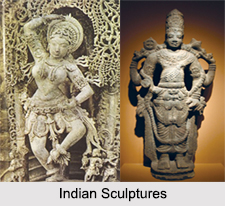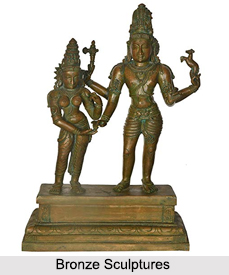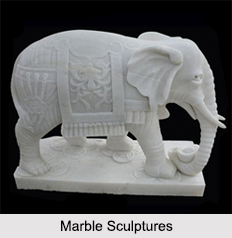 Indian Sculpture was the favoured medium of artistic expression on the Indian subcontinent. Indian buildings were profusely adorned with it and indeed are often inseparable from it. Indian Sculptures and its associated zone lay bare the fact that sculpture is essentially a public art. It is indeed amazing how even day to day affairs have been portrayed with the help of sculptures in India from political economy to the cultural hedonism the plethora is immense and extensive. Mankind have had used sculpture as the basic means of artistic expression. The art of sculpture requires the sculptors to breathe life to the cold and lifeless stones and rocks. The Indian artisans have been successfully rendering life to these listless blocks.
Indian Sculpture was the favoured medium of artistic expression on the Indian subcontinent. Indian buildings were profusely adorned with it and indeed are often inseparable from it. Indian Sculptures and its associated zone lay bare the fact that sculpture is essentially a public art. It is indeed amazing how even day to day affairs have been portrayed with the help of sculptures in India from political economy to the cultural hedonism the plethora is immense and extensive. Mankind have had used sculpture as the basic means of artistic expression. The art of sculpture requires the sculptors to breathe life to the cold and lifeless stones and rocks. The Indian artisans have been successfully rendering life to these listless blocks.
History of Indian Sculptures
History of Indian sculpture dates back to the Indus Valley Civilization of 2500 to 1800 BCE, during which time small terracotta figurines were produced. While stone, metal, ceramics and wood have taken a back seat; the sculpture zone has been swept off by the horizons of light and sound. Environmental art and sculpture has hogged the limelight and the contemporary age has manifested the nuances of the same. There was a constant influence of foreign art and culture that enriched Indian sculpture and architecture. The grandeur that the Islamic art brought to India has been embossed in marbles and red sandstones. When the British reigned over India, the sculptures were of the European Gothic style. A wide range of styles and traditions subsequently flourished in different parts of India over the succeeding centuries. Indian sculpture had reached a form that has lasted with little change up to the present day.
Types of Indian Sculptures
The various types of Indian Sculptures depe nd on the materials of which the sculptures have been composed. They are as follows:
nd on the materials of which the sculptures have been composed. They are as follows:
•Wooden Sculptures - Wooden Sculptures are made almost all over India. The southern states of Karnataka, Kerala and Tamil Nadu have an exceptionally grand tradition of wood sculpting.
•Bronze Sculptures - Bronze Sculptures have been discovered from many regions of India. These were used for ritual worship and are characterised by exquisite beauty and aesthetic appeal.
•Marble Sculptures - Marble has been one of the most popular choices of material for crafting statues since ancient times. Marble sculptures are sturdy, durable, elegant and classy.
•Stone Sculptures - The classical tradition of Stone Sculptures in India was closely linked with architecture. All major temples of India illustrate the rich tradition of Stone Sculptures.

•Sand Sculptures - Sand Sculptures are popular among the booming tourist industry in Puri. The sculptures are created solely with sand, water and a small amount of glue.
Themes of Indian Sculptures
Indian craftsmen have always been fascinated by figures from mythology and religion. Sculptures of Hindu Gods and Goddesses, of other Hindu figures, of Buddha, and figures from Christianity and other religions have hence dominated their work. The nude was used both to represent the body as a symbol of spirit and to reveal the imagined shapes of the Gods. The multiple heads and arms of sculptured Hindu divinities were thought necessary to display the manifold attributes of these Gods" power. In addition, they have also carved beautiful statues and sculptures inspired by everyday life, as well as court life. India boasts of sculptures of animals, birds and human figures. Indian artists also experiment with abstract sculpture and sculpture in other media.
Features of Indian Sculptures
A characteristic of Indian sculpture is that it is primarily realistic in nature and that human forms appear in it are closely related to the surroundings. Intricate designs and sculptural artefacts mark the archetypal feature of the lost history of the classic Indian Sculpture.



